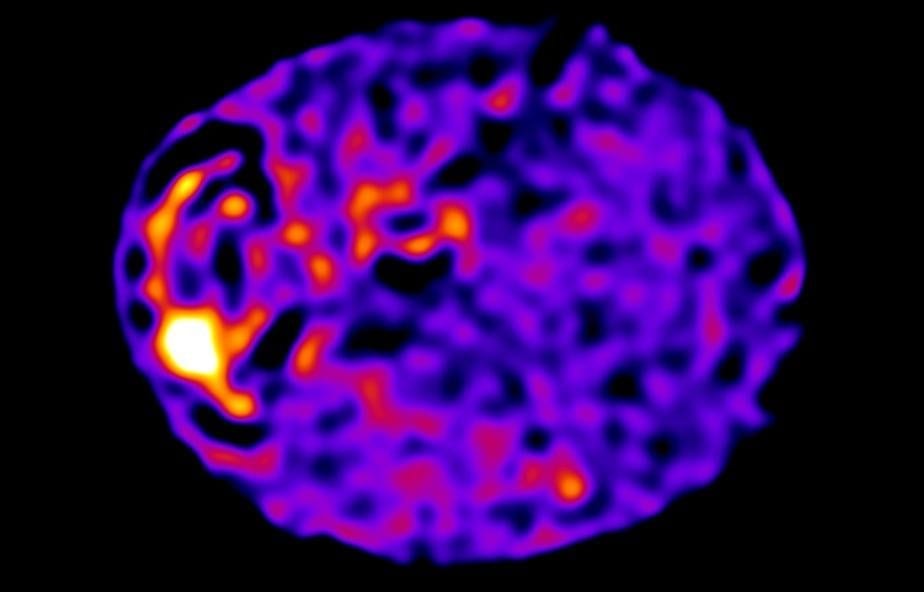
Cells in the body are wired like computer chips to direct signals that instruct how they function, research suggests.
Unlike a fixed circuit board, however, cells can rapidly rewire their communication networks to change their behaviour.
Cell-wide web
The discovery of this cell-wide web turns our understanding of how instructions spread around a cell on its head.
It was thought that the various organs and structures inside a cell float around in an open sea called the cytoplasm.
Signals that tell the cell what to do were thought to be transmitted in waves and the frequency of the waves was the crucial part of the message.
Nanoscale
Researchers at the University of Edinburgh found information is carried across a web of guide wires that transmit signals across tiny, nanoscale distances.
It is the movement of charged molecules across these tiny distances that transmit information, just as in a computer microprocessor, the researchers say.
These localised signals are responsible for orchestrating the cell’s activities, such as instructing muscle cells to relax or contract.
Gene expression
When these signals reach the genetic material at the heart of the cell, called the nucleus, they instruct minute changes in structure that release specific genes so that they can be expressed.
These changes in gene expression further alter the behaviour of the cell. When, for instance, the cell moves from a steady state into a growth phase, the web is completely reconfigured to transmit signals that switch on the genes needed for growth.
Understanding disease
Researchers say understanding the code that controls this wiring system could help understand diseases such as pulmonary hypertension and cancer, and could one day open up new treatment opportunities.
The most striking thing is that this circuit is highly flexible, as this cell-wide web can rapidly reconfigure to deliver different outputs in a manner determined by the information received by and relayed from the nucleus. This is something no man-made microprocessors or circuit boards are yet capable of achieving.
Charged molecules
The team made their discovery by studying the movement of charged calcium molecules inside cells, which are the key messages that carry instructions inside cells.
Using high-powered microscopes, they were able to observe the wiring network with the help of computing techniques similar to those that enabled the first ever image of a black hole to be obtained.
Quantum biology
Scientists say their findings are an example of quantum biology – an emerging field that uses quantum mechanics and theoretical chemistry to solve biological problems.
Learn more: Scientists discover circuit boards inside cells
The Latest on: Quantum biology
[google_news title=”” keyword=”quantum biology” num_posts=”10″ blurb_length=”0″ show_thumb=”left”]
via Google News
The Latest on: Quantum biology
- Leela Quantum Tech® Earns Dragonfly Health Innovation Awardon May 6, 2024 at 6:00 am
Leela Quantum® Tech, innovator of elegant and simple-to-use products that combine science and quantum wellness, is thrilled to announce its EMF-mitigating necklace, the H.E.A.L.® Energy Capsule, is ...
- A science-based afterlife: Can quantum entanglement save my failing body? - opinionon May 4, 2024 at 3:13 am
Will quantum biology finally provide a fact-based explanation reconciling the supernatural with the physical world?
- Quantum fiber optics in the brain enhance processing, may protect against degenerative diseaseson April 29, 2024 at 8:31 am
The effects of quantum mechanics—the laws of physics that apply at exceedingly small scales—are extremely sensitive to disturbances. This is why quantum computers must be held at temperatures colder ...
- Ultraviolet superradiance from mega-networks of tryptophan in neuron fibers (IMAGE)on April 29, 2024 at 6:01 am
Large quantum optical networks of tryptophan in protein architectures – the kinds found in mammalian brains, but also in all eukaryotes and even in some bacteria – influence their collective response ...
- Quantum fiber optics in the brain enhance processing, may protect against degenerative diseaseson April 28, 2024 at 5:00 pm
“I believe that our work is a quantum leap for quantum biology, taking us beyond photosynthesis and into other realms of exploration: investigating implications for quantum information processing, and ...
- How Quantum Computers Could Illuminate the Full Range of Human Genetic Diversityon April 26, 2024 at 10:26 am
Pangenomes that incorporate many people’s DNA could capture the breadth of human genetic diversity, and quantum computers may be a key enabler.
- “Truly Amazing” – Quantum Dots Successfully Synthesized Inside Living Cells!on April 24, 2024 at 11:43 pm
A recent study published in the journal National Science Review demonstrates the synthesis of quantum dots (QDs) in the nucleus of live cells. The research was conducted by Dr. Hu Yusi, Associate ...
- New research area promotes both quantum computing and cognitive scienceon March 26, 2024 at 7:10 am
Different degrees of freedom in quantum biology and molecular quantum computing are interconnected with key components of the neuron cell. The amber-colored relationships depicted are yet to be ...
- Quantum Effects in Biologyon February 29, 2024 at 6:04 am
yet the interface between quantum mechanics and biology is only now being explored. This book uses a combination of experiment and theory to examine areas of biology believed to be strongly influenced ...
- Quantum physics proposes a new way to study biology – and the results could revolutionize our understanding of how life workson May 15, 2023 at 6:02 am
But this may one day be a possibility through the emerging field of quantum biology. Over the past few decades, scientists have made incredible progress in understanding and manipulating ...
via Bing News









